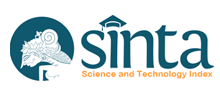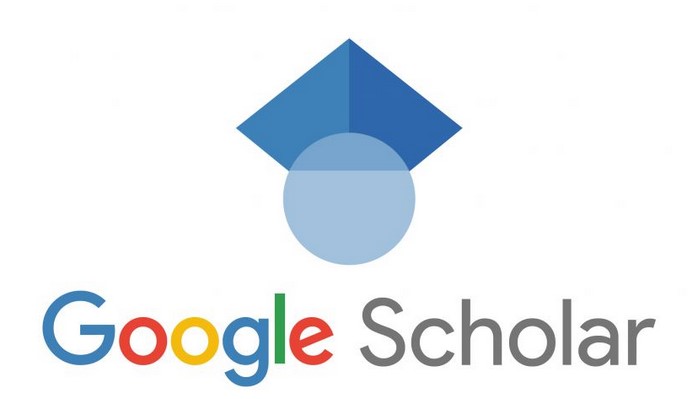Keywords
Civic Education, Online Learning, Student Creativity.
Document Type
Article
Abstract
This study examines the effectiveness of the SPADA Indonesia online learning platform in fostering creativity among students enrolled in Civic Education courses at Universitas Pendidikan Indonesia (UPI) and Universitas Lambung Mangkurat (ULM) Banjarmasin. Given the increasing importance of creativity as a critical skill for future graduates, this research aims to explore how the features and interactive elements of SPADA Indonesia contribute to enhancing student creativity within the context of mandatory Civic Education curricula. A total of 90 students participated in this study, comprising 45 from each university, selected through purposive sampling to ensure a diverse representation of experiences and perspectives. Data collection involved pre- and post-intervention surveys, focus group discussions, and observational analysis of student activities within the online platform. The findings reveal that students reported increased engagement, flexibility, and creative problem-solving skills when using SPADA Indonesia for their coursework. Furthermore, the study identifies specific platform aspects—such as interactive modules, collaborative forums, and multimedia resources—that positively impact students' creative capacities. The results suggest that SPADA Indonesia can be a valuable tool in enhancing creativity within Civic Education, with implications for its integration into broader academic curricula. These findings significantly impact the wider scholarly community, potentially shaping the future of education. Recommendations for optimizing the use of online learning platforms to support creative development were discussed.
First Page
47
Last Page
57
Page Range
47-57
Issue
1
Volume
22
Digital Object Identifier (DOI)
10.21831/jc.v22i1.1325
Recommended Citation
Iswandi, D., Budimansyah, D., Komalasari, K., & Fitriasari, S. (2025). Enhancing student creativity through online learning: A study of SPADA Indonesia in Civic Education courses at Universitas Pendidikan Indonesia and Universitas Lambung Mangkurat. Jurnal Civics: Media Kajian Kewarganegaraan, 22(1), 47-57. https://doi.org/10.21831/jc.v22i1.1325
References
Allen, I. E., & Seaman, J. (2021). Online learning in the time of COVID-19: A snapshot of institutional responses across 4 countries. Babson Survey Research Group.
Barnes, & Noble. (2019). The impact of technology on learning and development. Educational Technology Publications.
Braun, V., & Clarke, V. (2006). Using thematic analysis in psychology. Qualitative Research in Psychology, 3(2), 77–101. https://doi.org/https://doi.org/10.1191/1478088706qp063oa
Brett M, & Fischer. (2020). Developing and sustaining creativity: Creative processes in Canadian junior college teachers. Creativity Research Journal, 30(1), 50–58. https://doi.org/https://doi.org/10.1016/j.tsc.2020.100754
Chang, J. H. (2021). Enhancing creativity through online learning: A case study of SPADA Indonesia. Journal of Educational Technology Research, 12(2), 45–59. https://doi.org/10.1037/edu12-2.003
Chen, T., Cong, G., Peng, L., Yin, X., Rong, J., & Yang, J. (2020). Analysis of user satisfaction with online education platforms in China during the covid-19 pandemic. Healthcare (Switzerland), 8(3). https://doi.org/10.3390/healthcare8030200
Creswell, J. W. (2014). Research design: Qualitative, quantitative, and mixed methods approaches (4th ed.). SAGE Publications.
Creswell, J. W., & Clark, V. L. P (2017). Designing and conducting mixed methods research (3rd ed.). SAGE Publications.
Florida, R. (2014). The rise of the creative class revisited. Basic Books.
Garrison, D. R. (2011). E-Learning in the 21st century. Routledge. https://doi.org/10.4324/9780203838761
Garrison, D. R., & Anderson, T. (2003). E-learning in the 21st century: A framework for research and practice. In Educational Researcher (Issue 4). Routledge.
Halimi, M., Rahmat, R., Nugraha, R. A., & Pratiwi, E. D. (2022). Young digital citizen answers: Can online learning improve the quality of civic education learning? Jurnal Civics: Media Kajian Kewarganegaraan, 19(1), 99–109. https://doi.org/10.21831/jc.v19i1.40140
Iswandi, D., Budimansyah, D., Komalasari, K., & Fitriasari, S. (2022). Implementation of SPADA in general Civic Education courses in developing student creativity. https://doi.org/10.2991/assehr.k.220108.100
Johnson, D. W., & Johnson, R. T. (1999). Learning together and alone: Cooperative, competitive, and individualistic learning. Educational Researcher, 21(4), 12–16.
Kharkhurin, A. V. (2014). Creativity 4in1: Four-criterion construct of creativity. Creativity Research Journal, 26(3), 338–352. https://doi.org/10.1080/10400419.2014.929424
Kim, E., Park, H., & Jang, J. U. (2019). Development of a class model for improving creative collaboration based on the online learning system (Moodle) in Korea. Journal of Open Innovation: Technology, Market, and Complexity, 5(3). https://doi.org/10.3390/joitmc5030067
Mohammed, K. S., Rashid, C. A., Salih, H. A., & Budur, T. (2020). The role of online teaching tools on the perception of the students during the lockdown of Covid-19. International Journal of Social Sciences and Educational Studies, 7(3). https://doi.org/10.23918/ijsses.v7i3p178
Malysheva, O., Tokareva, E., Orchakova, L., & Smirnova, Y. (2022). The effect of online learning in modern history education. Heliyon, 8(7). https://doi.org/10.1016/j.heliyon.2022.e09965
Mao, S., Wang, D., Tang, C., & Dong, P. (2022). Students’ online information searching strategies and their creative question generation: The moderating effect of their need for cognitive closure. Frontiers in Psychology, 13. https://doi.org/10.3389/fpsyg.2022.877061
Miles, M. B. , H. A. M., & Saldaña, J. (2014). Qualitative data analysis: A methods sourcebook (3rd ed.). SAGE Publications.
Ministry of Education and Culture. (2020). Digital education policy in Indonesia. Ministry of Education and Culture.
Patton, M. Q. (1999). Enhancing the quality and credibility of qualitative analysis. Health Services Research, 34(5), 1189–1208. https://pmc.ncbi.nlm.nih.gov/articles/instance/1089059/pdf/hsresearch00022-0112.pdf
Robinson. (2018). Creative schools: The grassroots revolution that’s transforming education. Penguin Books.
Rosar, M., & Weidlich, J. (2022). Creative students in self-paced online learning environments: an experimental exploration of the interaction of visual design and creativity. Research and Practice in Technology Enhanced Learning, 17(1). https://doi.org/10.1186/s41039-022-001831
Saba Ayman‐Nolley. (2009). Vygotsky’s perspective on the development of imagination and creativity. June 2013, 37–41. https://doi.org/https://doi.org/10.1080/10400419209534424
Suryadi. (2019). The importance of Civic Education in Indonesia’s curriculum. Journal of Civic Education and Social Studies, 1–14. https://doi.org/10.1007/s42448-019-00018-9
Ting-Toomey, S., & Dorjee, T. (2019). Communicating across cultures. Guilford Press.
Torrance, E. P. (1974). The torrance tests of creative thinking: Norms-technical manual. Personnel Press.
Wiratman, A., & Rahmadani, E. (2022). The COVID-19 and online learning: Challenges for university students. 1(3), 316–325. https://doi.org/10.51574/ijrer.v1i2.439



